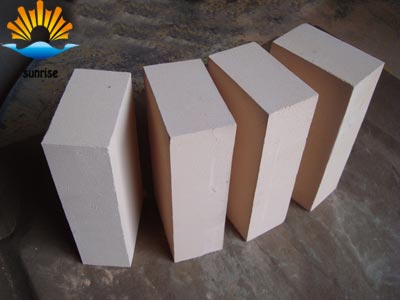How to Select Refractory Bricks for the Heating Furnace
2016-08-19
When selecting refractory bricks for the heating furnace, consider the local resources, select reasonable refractory bricks and consider the characteristics of the furnace.
The conditions in different types of furnaces and different parts in the furnace are different, so different refractory bricks are used. The parts that withstand larger stress should use refractory bricks with food thermal stability. In the parts that bear high load, high strength refractory bricks are used and the RUL of the bricks should be taken into consideration.
Some furnaces such as the shaker hearth heat-treating furnaces withstand mechanical shock and impact of the workpieces. They can adopt alumina cement refractory concrete overall ramming structure. In the ring furnace, take the impact and wear of the workpieces. High alumina bricks or chrome ore can be used in the ring furnace. For seriously damaged parts, consider the partial replacement or repair convenience.
In parts where refractory bricks contact the corrosive media, select refractory materials according to the nature of chemical reaction. For example, in the soaking furnace hearth, soaking bed of the pusher type continuous furnace and the seat of the reverberatory furnace, due to the erosion by iron oxide slag, magnesia bricks are preferred.
Also, consider the special requirements of certain furnaces. in the direct flame heating stainless steel heat treatment furnace, in order to get rid of scars caused by the slags dropping from the roof on the quality of the board, refractory bricks with high refractoriness and good thermal stability are used. In the cycle heat treatment furnace, the furnace should have low thermal inertia, so lightweight refractory bricks with small thermal conductivity and good insulation are used.
When different types of refractory products are in contact with each other at high temperature, also consider whether they can react with each other.
